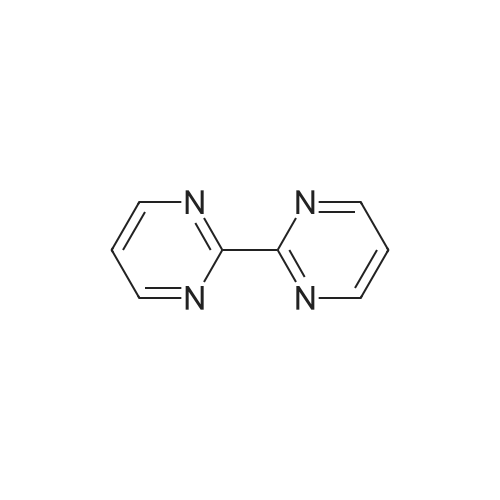Continuous Flow Chemistry and Bayesian Optimization for Polymer-Functionalized Carbon Nanotube-Based Chemiresistive Methane Sensors
Dunlap, John H
;
Feng, Haosheng
;
Pioch, Thomas
, et al.
ACS Appl. Mater. Interfaces,2024,16(49):68181-68196.
DOI:
10.1021/acsami.4c14279
PubMed ID:
39592136
More
Abstract: We report the preparation of poly(ionic) polymer-wrapped single-walled carbon nanotube dispersions for chemiresistive methane (CH4) sensors with improved humidity tolerance. Single-walled CNTs (SWCNTs) were noncovalently functionalized by poly(4-vinylpyridine) (P4VP) with varied amounts of a poly(ethylene glycol) (PEG) moiety bearing a Br and terminal azide group (Br-R1). The quaternization of P4VP with Br-R1 was performed using continuous flow chemistry and Bayesian optimization-guided reaction selection. Polymers (PyBrR1) with different degrees of functionalization were used to disperse SWCNTs and subsequently incorporated into sensors containing a platinum complex as an aerobic oxidative catalyst with a polyoxometalate (POM) redox mediator to facilitate room-temperature CH4 sensing. As the degree of quaternization in the PyBrR1-CNT composites increased, improvements in response magnitude were observed, with nominally 10% quaternized PyBrR1 giving the largest response. Incorporation of PEG improved sensor stability at relative humidities between 57?90% versus sensors fabricated from CNT dispersions with unfunctionalized P4VP. Devices fabricated with these dispersions outperformed those prepared in situ under dry conditions, and exhibited greater stability at elevated humidities. The influence of Keggin-type POM character was also evaluated to identify alternative POMs for enhanced sensor performance at high humidity. In an effort to identify areas for further improvement in algorithm performance for polymer functionalization, a kinetically informed machine learning model was explored as a route to predict reactivity of pyridine units and alkyl bromides under flow conditions.
Keywords:
Bayesian optimization ;
flow chemistry ;
polymer wrapped carbon nanotube ;
sensors ;
chemiresistor ;
methane
Purchased from AmBeed:
34671-83-5 ;
10025-99-7

Tailoring the redox capabilities of organic ligands for metal-ligand coordination with vanadium single-sites
Tobias W. Morris
;
David L. Wisman
;
Nassem U. Din
, et al.
Surf. Sci.,2021,712,121888.
DOI:
10.1016/j.susc.2021.121888
More
Abstract: The creation of single-site metal centers (SSMCs) through the formation of metal-organic coordination networks is an area of interest due to the proven ability of SSMCs to improve selectivity for heterogeneous catalysts. In order to better understand the reactivity potential for the SSMCs it is necessary to study the ligand-metal interaction in the metal-organic coordination networks. In the work reported here, we demonstrate the ability to tune the oxidation state of vanadium from II to IV through the tailoring of redox-active ligands. Using the N-heterocyclic ligands of bipyrimidine (BP), bispyrimidinyltetrazine (BMTZ), and biimidazole (BIM) complexed with metallic V, we have shown that the oxidation state of the V metal centers can be tuned to V(II) for BP, V(III) for BMTZ, and V(IV) for BIM. These redox-active ligands provide similar coordination environments when complexed into one dimensional chains but result in different oxidation states for the single-site metal center.
Keywords:
Metal-organic coordination ;
On-surface redox assembly ;
Scanning tunneling microscopy ;
Density functional calculations ;
X-ray photoelectron spectroscopy ;
Redox-active ligands ;
Charge transfer ;
Metals
...More
Purchased from AmBeed:
34671-83-5 ;
492-98-8

Rational Molecular Design for Self-Assembly Tuning of Organic Molecular Layers and Metal-Organic Networks on Metal Surfaces
Wisman II, David L
;
Indiana University,2021.
More
Abstract: Surface-assisted self-assembly of architectures is showing promise for the development of more efficient technologies and processes related to the fields of organic electronics, photovoltaics and heterogeneous catalysis. The detailed understanding of the intermolecular and molecule-substrate interactions that are responsible for resulting surface architectures is necessary for the rational design molecular systems. The experiments detailed within this thesis show that through careful tuning of organic molecules significant changes are observed in the 2-D self-assembly, 3-D stacking, or metal-organic coordination properties. These ideas are first demonstrated by tuning the intermolecular interactions of organic molecules on metal surfaces. It is shown that the 2-D self-assembly can be controlled through the functionalization of the parent molecule. In one study the addition of bulky methoxy groups was shown to modify 2-D surface structure, which also led to a change in the 3-D stacking of the molecules due to the loss of overlap of the π systems of the molecules in the layers below. Modification of the self-assembly is also investigated through changing of the intermolecular hydrogen bonding potential in a series of molecules with similar properties. Here it was found that the stability and long-range order can be tuned through the introduction of functional groups with a higher electro-negativities.
Purchased from AmBeed:
34671-83-5


 Chemistry
Chemistry
 Pharmaceutical Intermediates
Pharmaceutical Intermediates
 Inhibitors/Agonists
Inhibitors/Agonists
 Material Science
Material Science















 For Research Only
For Research Only
 120K+ Compounds
120K+ Compounds
 Competitive Price
Competitive Price
 1-2 Day Shipping
1-2 Day Shipping





